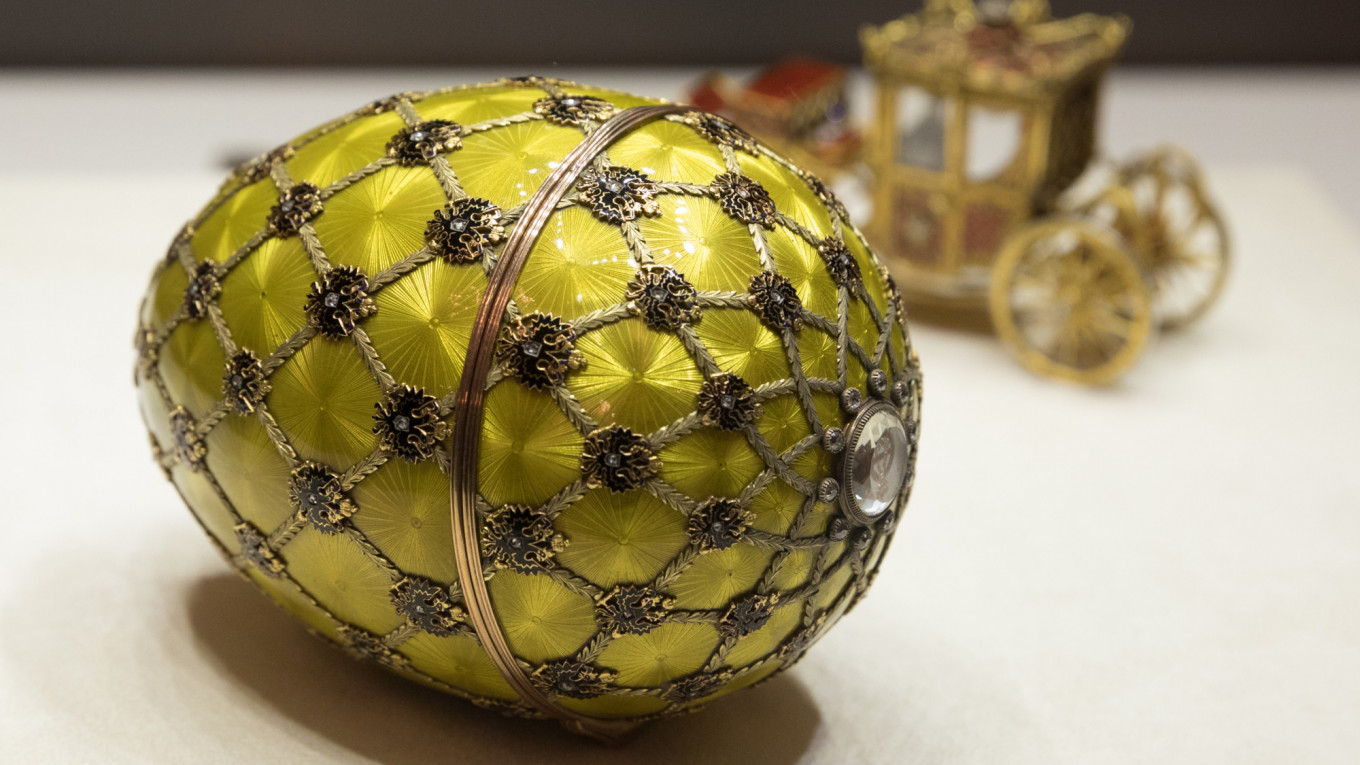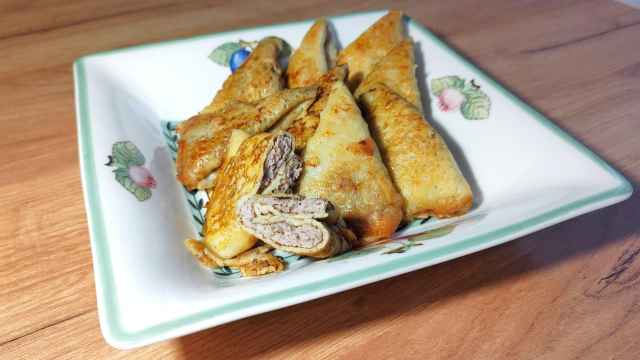No object is as synonymous with Romanov Russia as a Fabergé imperial Easter egg.
Each of the fifty eggs commissioned by the last Russian tsars is intricate, flawless, and unique. Gleaming and glittering behind bullet-proof glass in well-fortified museums, they are vibrant talismans of the lost sepia-colored world of the Romanovs. Of the fifty imperial Easter eggs, forty-two are extant today, and they make headlines any time they change hands; an imperial Easter egg can fetch millions of dollars at auction, though their intangible worth is deemed much higher because of their scarcity, their exquisite design, and their intimate association with the last Romanovs.
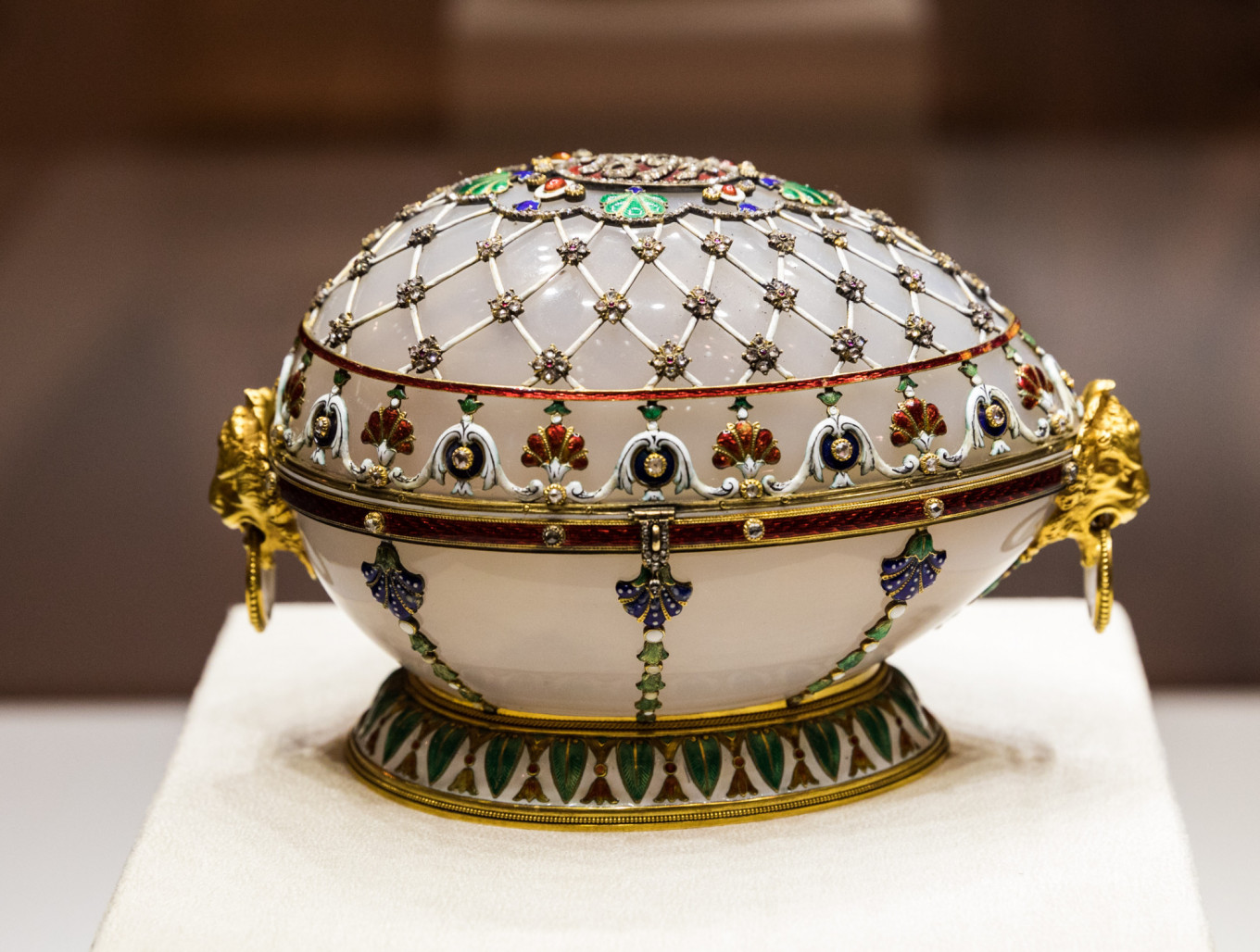
A family tradition
The creative genius behind the iconic jeweled Easter eggs was Peter Carl Fabergé, a third-generation French Huguenot émigré to Russia. Fabergé’s father, Gustav, established the family gold and silver workshop in St. Petersburg in 1842, but it was his 24-year-old son, taking over the business in 1870, who elevated the firm to “The House of Fabergé,” attracting the attention and patronage of the Romanovs, Russian nobility, and the empire’s growing number of wealthy businessmen and industrialists.
Word spread, and the House of Fabergé soon enjoyed the patronage of other European monarchs, including King Edward VII, whose wife Queen Alexandra was an enthusiastic collector of Fabergé bibelots, carved animals and small desk decorations. When Edward and Alexandra’s niece, Princess Alicky of Hesse became engaged to Russia’s Tsarevich Nicholas in 1894, Fabergé received his largest commission ever: Alexander III and Maria Fyodorovna gave Alicky a sautoir (a long string necklace) of pearls that cost $2.9 million in today’s money. Even Alicky’s grandmother, the redoubtable Queen Victoria was impressed, and reminded her granddaughter not to be “too proud.”
Fabergé was a watchword in fin de siècle Europe for the highest standard of quality of design and execution, and therein lay the appeal of a Fabergé creation. Fabergé was renowned for keeping a huge hammer by his worktable and would think nothing of smashing an item to smithereens if it did not meet his exacting standards.
"Your Majesty will be content."
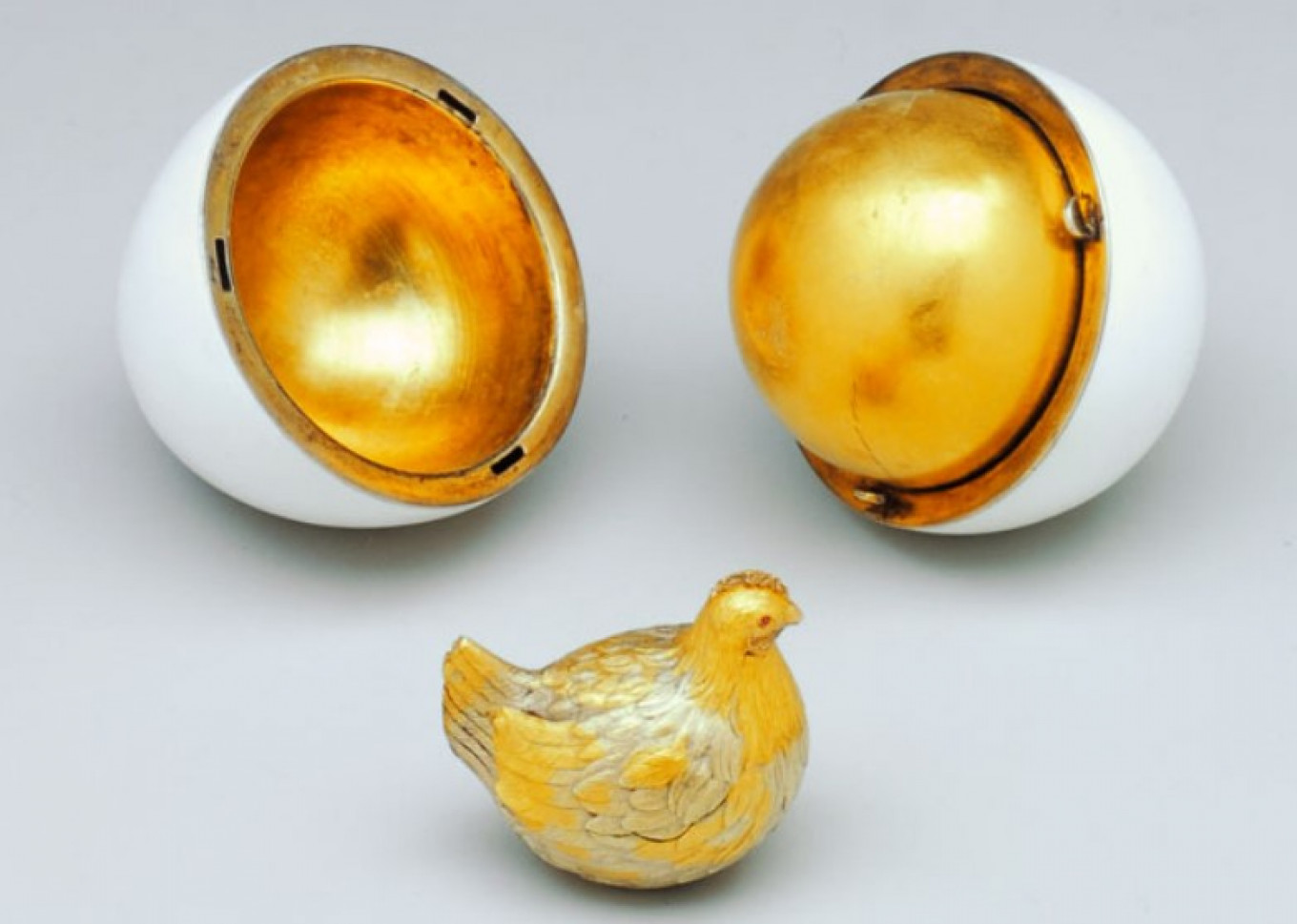
The zenith of Fabergé’s imagination and skill was the collection of Imperial Easter Eggs, which earned him the coveted status of “Goldsmith by Special Appointment to the Imperial Crown.”
In 1885, Fabergé first proposed a design for a jeweled egg to Alexander III as an Easter gift to his wife, the Danish-born Empress Maria Fyodorovna. The Tsar agreed, and stipulated that the egg must contain a surprise for his beloved consort.
Fabergé did not disappoint: the first Imperial Easter Egg, the Hen Egg, was based on a bibelot the empress recalled fondly from her childhood. Its relatively plain design most resembles a real egg and belies the precious materials used to create the illusion: gold covered with white enamel, opening to a yellow gold yolk. The “surprise” was a tiny gold hen inside the yolk.
The empress was entranced, and Alexander III promptly put in a standing order for one egg each Easter. But from that time on, the designs and materials were kept strictly under wraps, even from Fabergé’s imperial patron. Any attempts by the tsar to get a hint of the design ahead of Easter were met with Fabergé’s simple assurance that “Your Majesty will be content.”
The tsar was content, and following his death in 1894, his son Nicholas II kept up the Easter tradition, commissioning eggs for both his mother and Alicky, now Empress Alexandra.
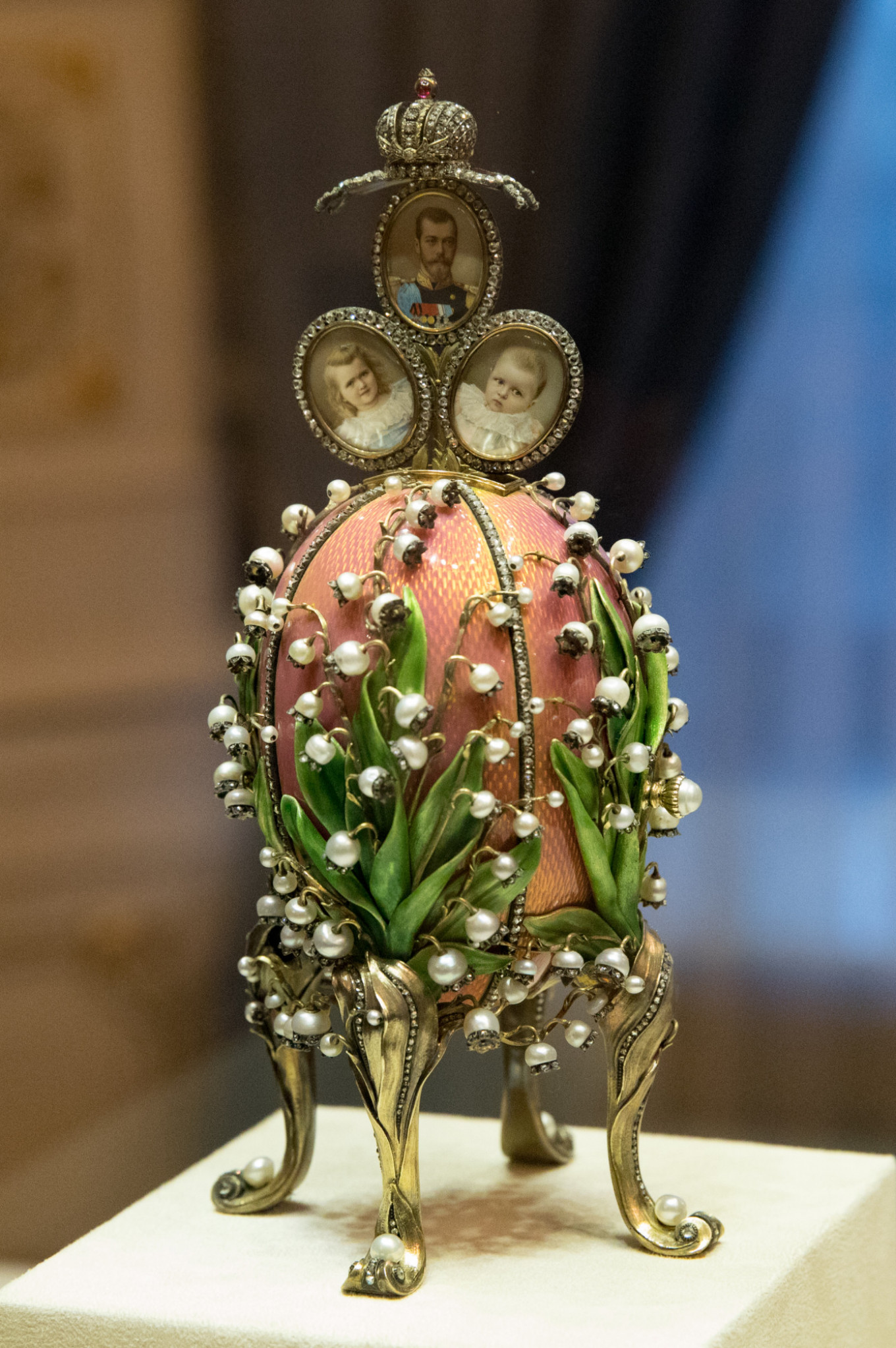
Fabergé and his team of 700 craftsmen were kept busy designing new and more intricate eggs with more amusing and intricate surprises inside for the two very different empresses. For Maria Fyodorovna, Fabergé stuck to more classical designs, such as the Danish Palaces Egg, now part of the Matilda Geddings Grey collection, on long-term loan to the Metropolitan Museum of Art in New York. For the younger Alexandra, Fabergé experimented with the emerging Art Nouveau style, in one of the most striking of all the imperial eggs, the Lily-of-the-Valley Egg; a pink guilloché surface on which gold, diamond, ruby, and pearl studded lilies-of-the-valley— the empress’s favorite flower—twine upwards towards tiny jewel-encrusted miniature portraits of the couple’s two eldest daughters, Olga and Tatiana.
The imperial Easter eggs often commemorated significant events in the ruler's reign, such as the gold-encrusted Coronation Egg, presented to Alexandra in 1897, or the famous Trans-Siberian Egg, which featured a detailed map of the railway line on the surface and as the surprise: a miniature, wind-up model of the trans-continental train, complete with every detail, including minuscule signs reading “Ladies Only” and “Gentlemen Only.” When wound up by the accompanying key, the train can still chug along.
The growing imperial family continued to be an inspiration for Fabergé’s designs for the younger Empress. Her five children appear in miniature on the surface of the 1911 Fifteenth Anniversary Egg, along with scenes of Nicholas’s reign. The family’s beloved yacht was rendered in exquisite miniature detail in the 1909 Standart Yacht Egg, encased in a single piece of polished rock crystal, its surface carved to mimic the sea. This is one of the few Imperial Eggs that lies horizontally rather than vertically.
Fabergé in war and revolution
When Russia and the Romanovs went to war in 1914, Fabergé’s designs reflected the shift in mood towards wartime economy and heightened patriotism. In 1915, Maria Fyodorovna, president of the Russian Red Cross, received the silver and enamel Imperial Red Cross Egg, with a surprise of portraits of all the Romanov women on active nursing duty: the Dowager Empress’s daughter, her two granddaughters, her daughter-in-law, and niece. A year later, Nicholas presented his mother with the Order of St. George Egg, commemorating the receipt of the coveted order for valor in the field by the Tsar and his son, the Tsarevich Alexei, both of whom are pictured on the silver and white enamel surface, decorated with the Order’s signature orange and black ribbons. This imperial egg accompanied the Dowager Empress into exile in Europe.
Fabergé made two final imperial eggs in 1917 but was unable to deliver them: Maria Fyodorovna fled south to Crimea and by Easter, Alexandra was incarcerated at the Alexander Palace, soon to be transported to Siberia. Fabergé himself fled Russia in 1918 to escape the violence of the Civil War. In 1921, desperate for grain imports to feed a starving population, the Bolshevik government sold off many of the Imperial treasures, including eleven imperial Easter eggs, to Armand Hammer and other wealthy devotees of Faberge’s craftsmanship.
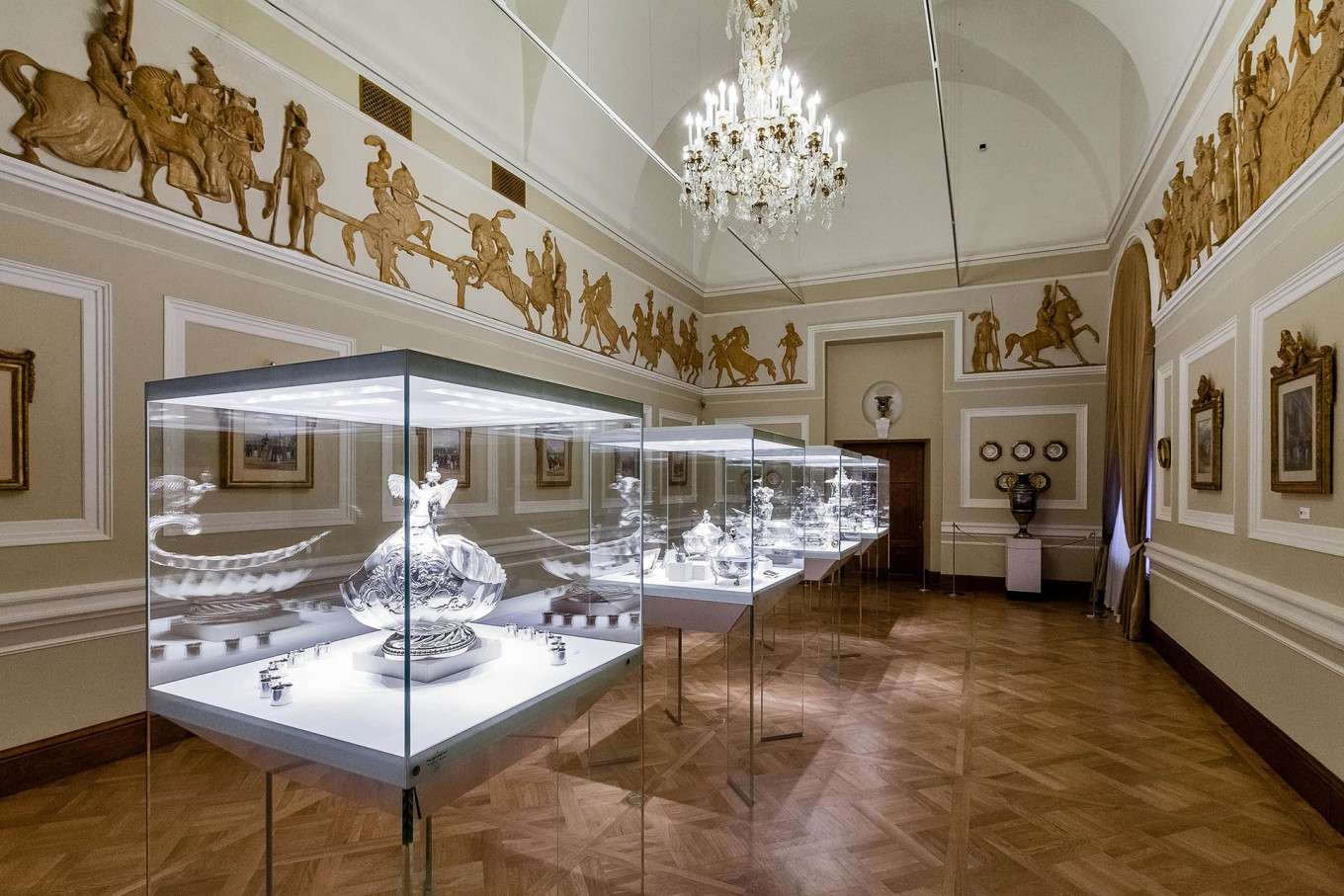
The Fabergé eggs come home
Until 2013, only seven imperial Easter eggs were in Russia, housed in the Kremlin’s Armory Museum. The small collected included the Kremlin Egg, the Romanov Tercentenary Egg, and the famous Trans-Siberian Egg, along with smaller Fabergé objects and artifacts. The purchase of a collection of ten imperial Easter eggs from the Forbes family in 2013 by Russian businessman Viktor Vekselberg more than doubled that number. The Forbes purchase, rumored to be over $100 million, formed the core of a new Fabergé Museum in St. Petersburg, also known as the Link of Times Foundation, housed in the elegant Shuvalov mansion on the Fontanka Canal.
The Link of Times Foundation collection includes the original Hen Egg, the exquisite Lilies-of-the-Valley Egg, the iconic Fifteenth Anniversary Egg, and the well-traveled Order of St. George Egg. While the Imperial Easter Eggs are undoubtedly the heart of the exhibition, the museum’s broader remit is to house the largest collection of Faberge’s works, as well as other outstanding examples of Russian enamel, porcelain, gold, silver, precious jewels, and painting, representing the zenith of the decorative arts in fin de siècle Imperial Russia.
21 Naberezhnaya reki Fontanki. Open daily 10 a.m. to 8:45 p.m. For more information about the collection, foundation and museum, see the site.
A Message from The Moscow Times:
Dear readers,
We are facing unprecedented challenges. Russia's Prosecutor General's Office has designated The Moscow Times as an "undesirable" organization, criminalizing our work and putting our staff at risk of prosecution. This follows our earlier unjust labeling as a "foreign agent."
These actions are direct attempts to silence independent journalism in Russia. The authorities claim our work "discredits the decisions of the Russian leadership." We see things differently: we strive to provide accurate, unbiased reporting on Russia.
We, the journalists of The Moscow Times, refuse to be silenced. But to continue our work, we need your help.
Your support, no matter how small, makes a world of difference. If you can, please support us monthly starting from just $2. It's quick to set up, and every contribution makes a significant impact.
By supporting The Moscow Times, you're defending open, independent journalism in the face of repression. Thank you for standing with us.
Remind me later.



